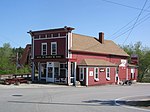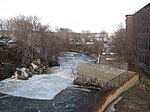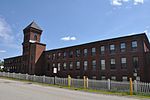Mount Saint Mary College (New Hampshire)
1893 establishments in New Hampshire1978 disestablishments in New HampshireDefunct private universities and colleges in New HampshireEducational institutions disestablished in 1978Educational institutions established in 1893 ... and 1 more
Women in New Hampshire

Mount Saint Mary College in Hooksett, New Hampshire was a Roman Catholic college for women founded in 1934 by the Sisters of Mercy. The college was situated on a 550-acre (220 ha) campus approximately 60 miles (97 km) northwest of Boston. It ceased operations in 1978 due to the increasing trend away from single sex higher education which in turn led to a decline in enrollment from a high of about 500 students to just under 200 at the time of the closing. This decline eventually was the cause of financial difficulties from which the school never recovered.
Excerpt from the Wikipedia article Mount Saint Mary College (New Hampshire) (License: CC BY-SA 3.0, Authors, Images).Mount Saint Mary College (New Hampshire)
Mt. St. Mary's Way,
Geographical coordinates (GPS) Address Nearby Places Show on map
Geographical coordinates (GPS)
| Latitude | Longitude |
|---|---|
| N 43.092777777778 ° | E -71.450833333333 ° |
Address
Mount Saint Mary's
Mt. St. Mary's Way 15
03106
New Hampshire, United States
Open on Google Maps









